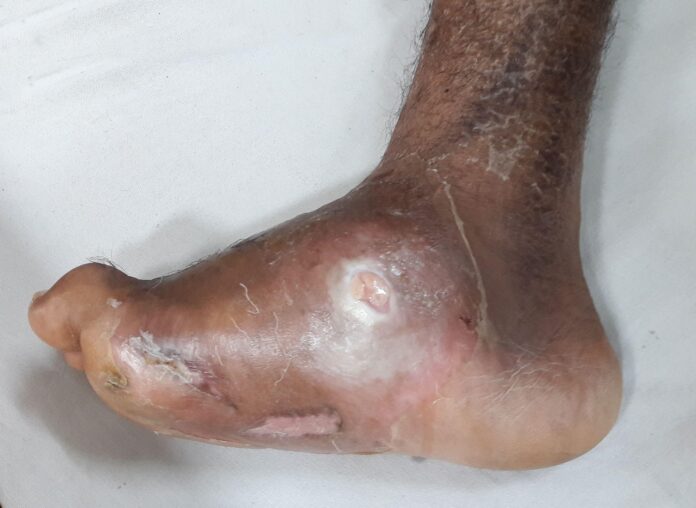
Diabetes is a condition that affects millions of people worldwide. One of the most common complications of diabetes is the development of foot problems. Diabetic foot problems can range from minor issues such as dry skin and calluses to more serious complications like ulcers and infections. It is important for people with diabetes to be aware of the early signs of foot problems so that they can seek treatment before the condition worsens.
One of the first signs of diabetic foot problems is numbness or tingling in the feet. Diabetes can cause nerve damage, a condition known as diabetic neuropathy, which can result in loss of sensation in the feet. This lack of sensation can make it difficult for people with diabetes to feel when they have developed blisters, cuts, or sores on their feet. Without prompt treatment, these minor injuries can develop into serious complications such as infections or ulcers.
Another early sign of diabetic foot problems is changes in skin color or texture. People with diabetes may notice that their feet become dry, cracked, or discolored. This is due to poor circulation, which can prevent wounds from healing properly. In some cases, the skin on the feet may become shiny or waxy in appearance. Any changes in the skin on the feet should be reported to a healthcare provider, as they may indicate an underlying foot problem.
People with diabetes are also at risk of developing foot deformities such as bunions, hammertoes, or Charcot foot. These conditions can result from nerve damage and poor blood flow to the feet. Foot deformities can cause pain, difficulty walking, and an increased risk of injuries. People with diabetes should be vigilant about monitoring their feet for any signs of deformities and seek treatment from a podiatrist if necessary.
One of the most serious complications of diabetic foot problems is the development of foot ulcers. Ulcers are open sores that can develop on the feet or toes and are often caused by pressure or friction from ill-fitting shoes. People with diabetes are at an increased risk of developing foot ulcers due to their compromised immune systems and poor circulation. If left untreated, foot ulcers can become infected and may require amputation of the affected limb.
In addition to the physical signs of diabetic foot problems, people with diabetes may also experience changes in their foot temperature or sensation. Some people may notice that their feet feel unusually warm or cold to the touch, while others may experience a burning or tingling sensation in their feet. These symptoms can be a sign of nerve damage or poor circulation, both of which can lead to foot problems if not addressed promptly.
It is important for people with diabetes to take preventative measures to protect their feet and reduce the risk of developing foot problems. Some tips for maintaining healthy feet include:
– Checking the feet daily for any signs of cuts, blisters, or sores.
– Keeping the feet clean and moisturized to prevent dry skin.
– Wearing comfortable, well-fitting shoes that provide adequate support and cushioning.
– Avoiding walking barefoot, especially on hard or uneven surfaces.
– Maintaining a healthy diet and exercising regularly to improve circulation and overall health.
People with diabetes should also see a podiatrist regularly for foot exams and treatment of any foot problems. A podiatrist can provide guidance on proper foot care and recommend treatments to prevent complications. By staying vigilant and taking proactive steps to care for their feet, people with diabetes can reduce their risk of developing serious foot problems and maintain their overall health and well-being.
In conclusion, understanding the early signs of diabetic foot problems is essential for people with diabetes to prevent complications and maintain healthy feet. By recognizing and addressing any changes in sensation, skin color, or foot deformities, individuals with diabetes can take proactive steps to protect their feet and reduce the risk of developing ulcers or infections. It is important for people with diabetes to prioritize foot care and seek medical attention promptly if they notice any signs of foot problems. With proper care and attention, people with diabetes can prevent serious complications and enjoy a better quality of life.












